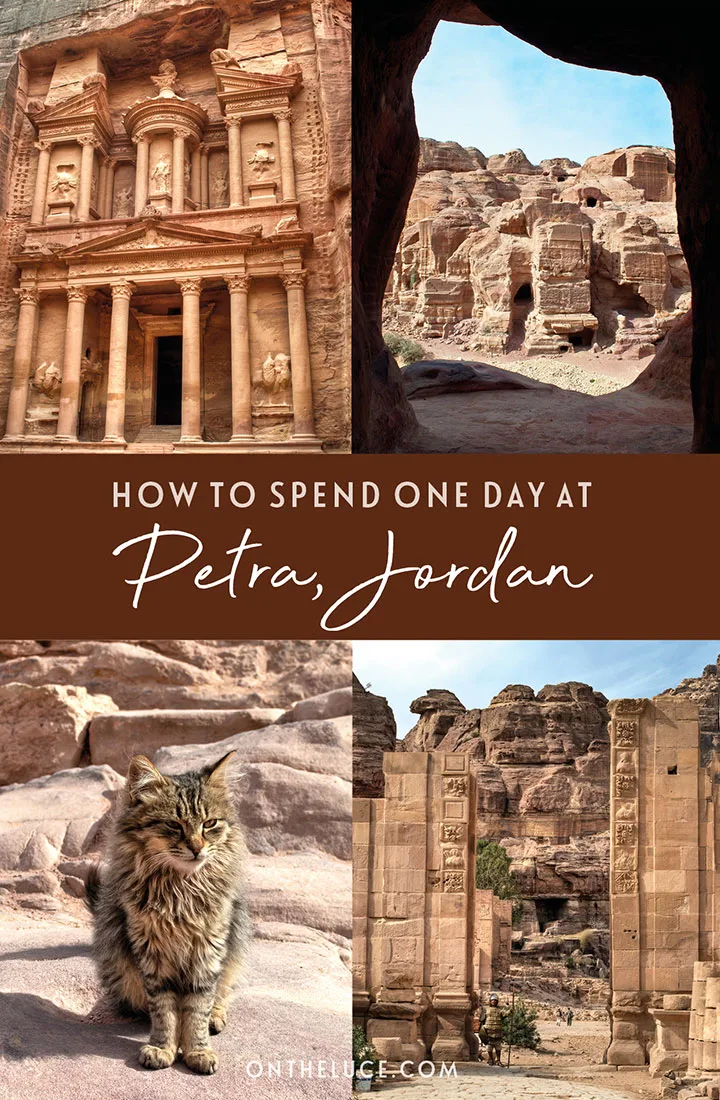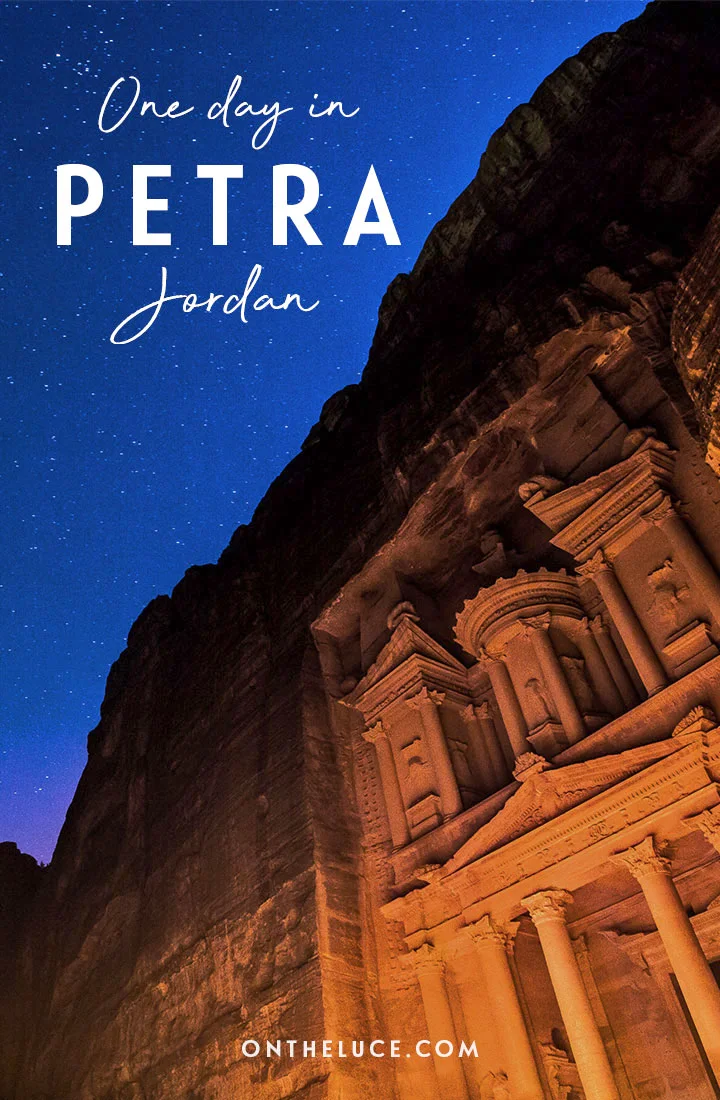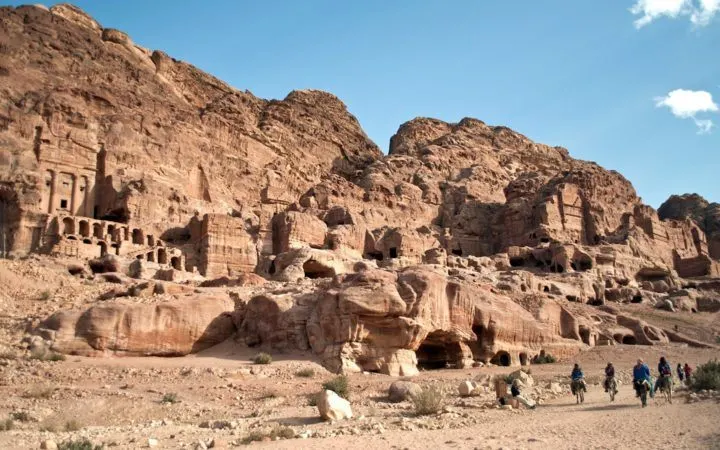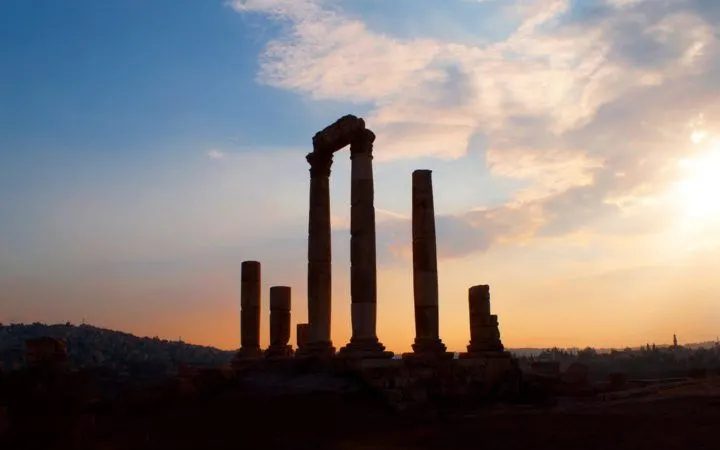How to see the best of Petra in one day – a one-day Petra itinerary featuring the highlights of this UNESCO World Heritage archaeological site, with what to see and do if you’re short on time.
* This site contains affiliate links, where I get a small commission from purchases at no extra cost to you.
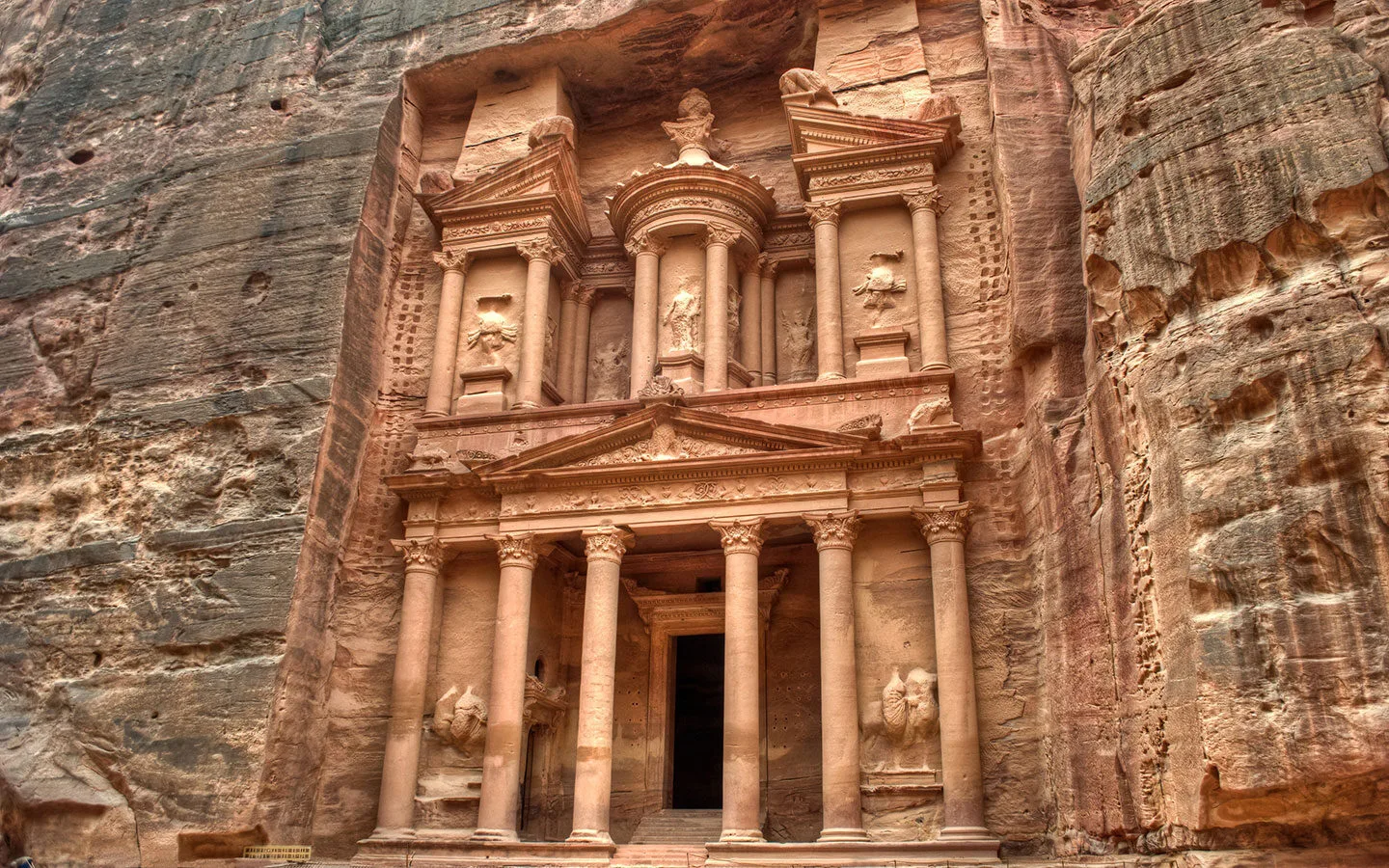
The ‘rose-red city half as old as time’, Petra is Jordan’s most famous tourist attraction. This mysterious city has been capturing people’s imaginations for hundreds of years. It’s one of those places you feel you know before you get there, having seen it in so many photos and films – not least thanks to its star turn in Indiana Jones and the Last Crusade.
But the famous Treasury is only a fraction of what Petra has to offer. The site stretches over a 60 square kilometres, with more caves, temples, mountains and hiking trails beyond that. You could easily spend a week exploring Petra. But what if you only have one day?
Although two–three days in Petra would be ideal, many visitors only have a day in Petra as part of their Jordan itinerary. So we’ve put together an itinerary for one day in Petra, with what to see in what order to make the most of your time. It’s a long day with lots of walking, but it’s more than worth it to experience one of the new Wonders of the World.
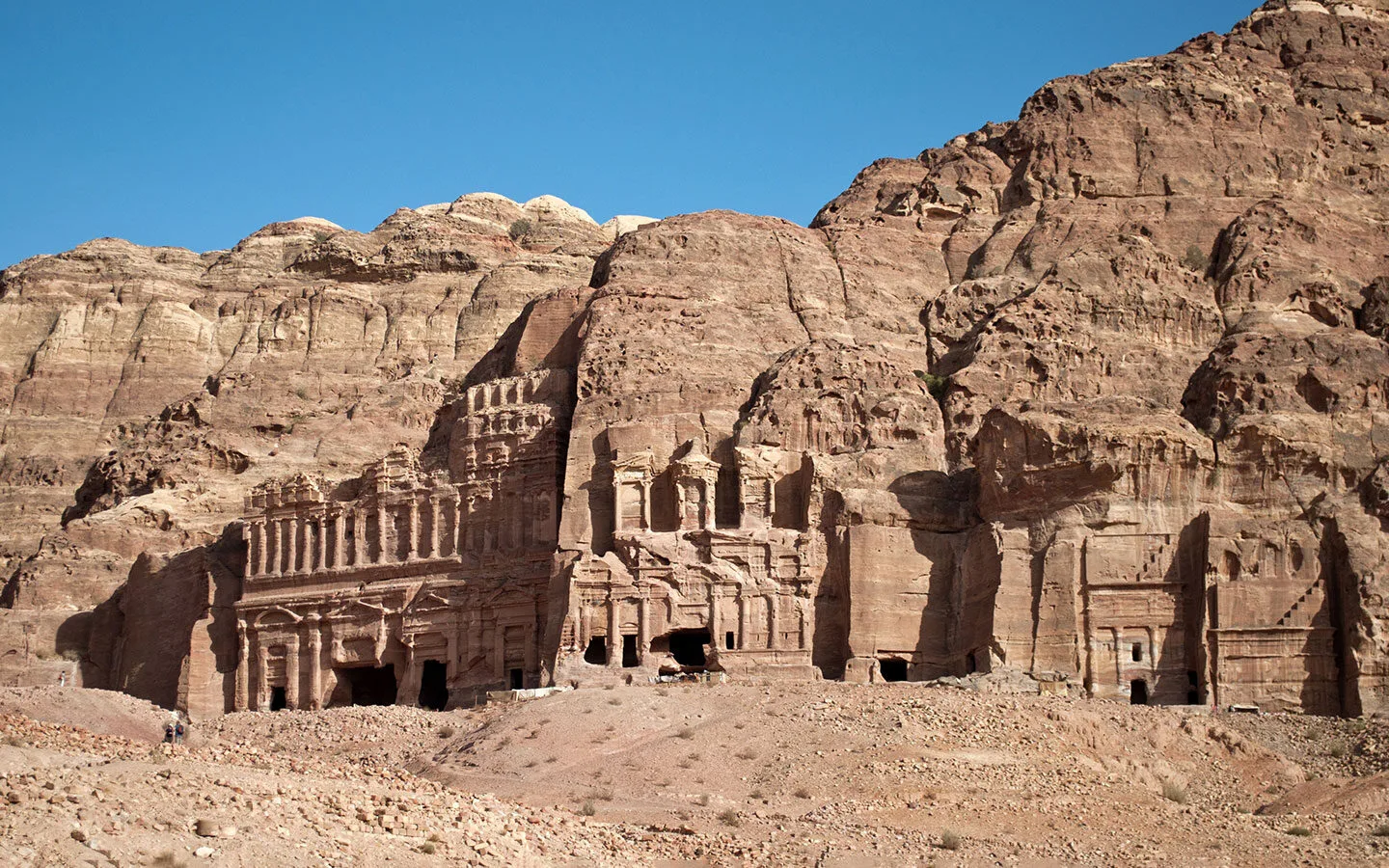
An introduction to Petra
Petra was built by the Nabateans around the fourth century BC. Normally a nomadic people, they had impressively advanced skills in architecture and irrigation and built a spectacular city at Petra. It was in prime spot on the incense trade route from Arabia to Damascus, and made them very rich, with over 20,000 inhabitants at its peak.
But Petra started to decline after being taken over by the Romans and later the Byzantines, and was seriously damaged by an earthquake in 363 AD. By the 12th century the site was largely abandoned, and it was forgotten about by the rest of the world until it was rediscovered by Swiss explorer Johann Ludwig Burckhardt in 1812.
It’s taken two centuries to map and categorise the full site, and new structures are still being discovered. Tourism started in Petra in the 1970s, and grew rapidly after it was made a UNESCO World Heritage Site in 1985, with more than 900,000 visitors in 2022.
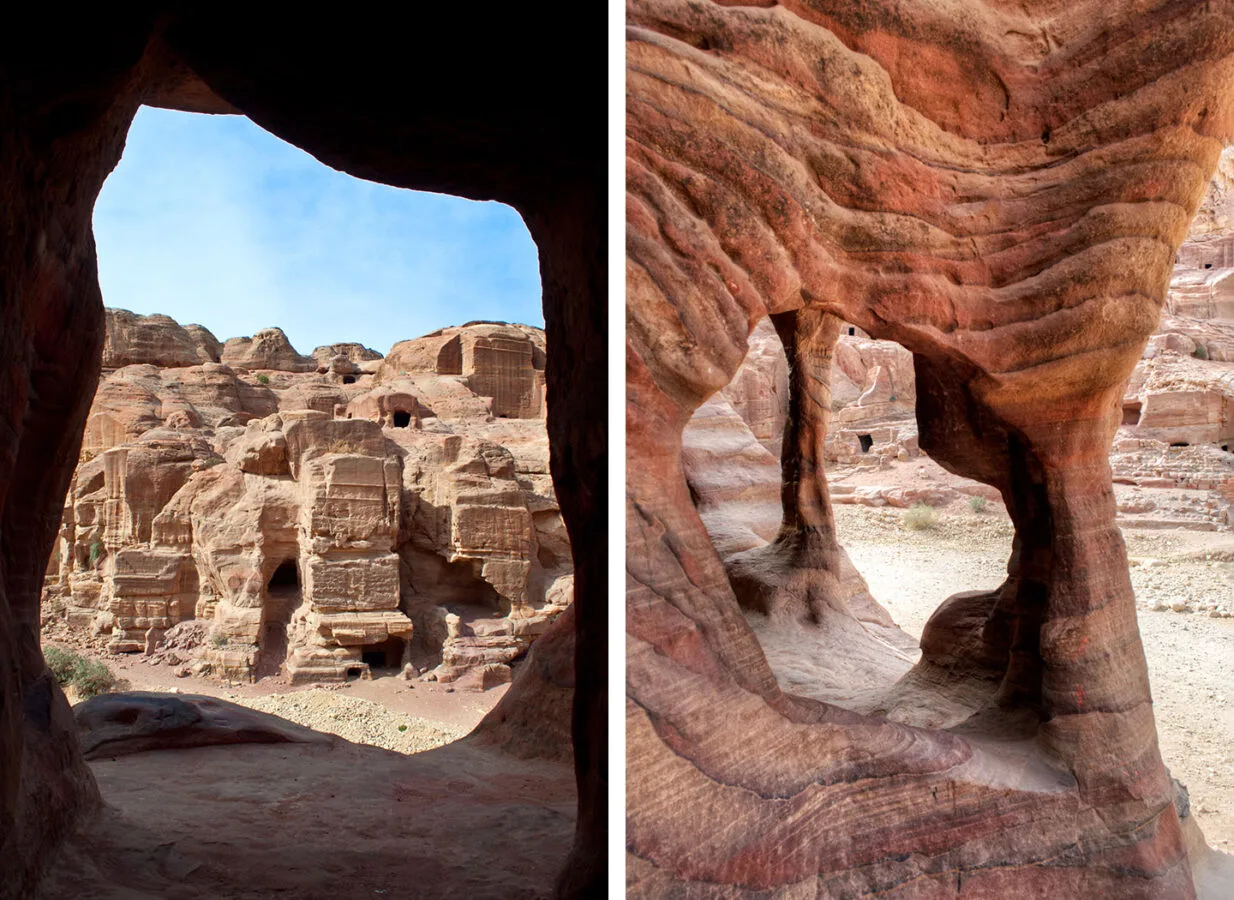
Useful information for visiting Petra
Getting to Petra: Although there are Petra day trip packages* from Amman, Aqaba and other locations, a lot of the day is taken up by travelling. So if you only have one day in Petra and want to see a good amount of the site, it’s best to stay in Wadi Musa the night before so you can get there early, and if possible also stay the night after too.
Petra is a three-hour drive from the Jordanian capital Amman. There’s also a JETT bus connecting the two. The bus from Amman leaves at 6.30am, arrives in Petra at 9.30am then departs at 5pm (JD10/£11/$14 each way), so it is possible to use it to do a day trip.
Opening hours: Petra’s ticket office is open daily, from 6am to 6pm in summer and 6am to 4pm in winter. The site closes at sunset, except on Mondays, Wednesdays and Thursdays when you can visit in candlelight for Petra by Night from 8.30pm–10.30pm.
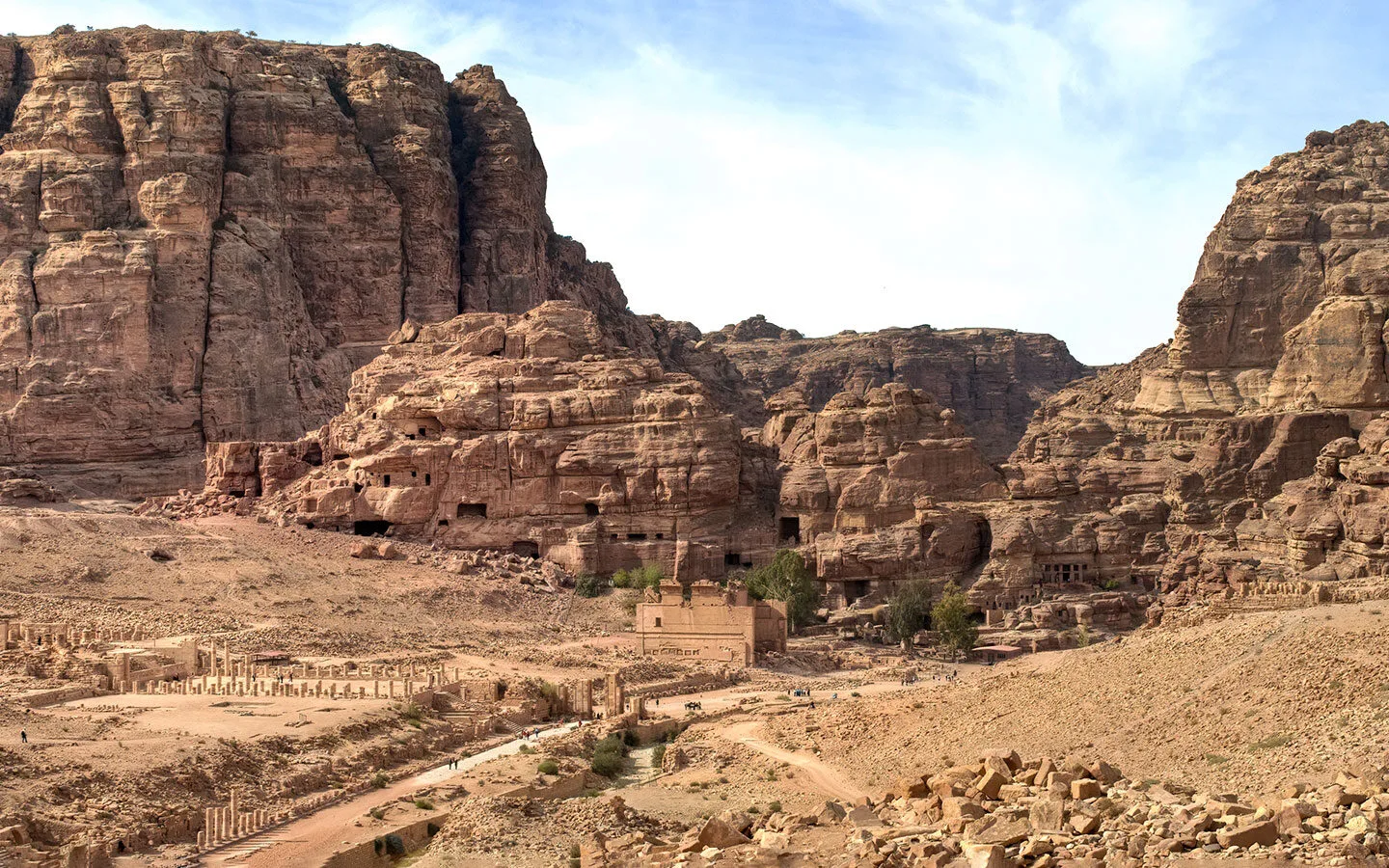
Tickets: A one-day ticket costs JD50 (£57/$71) per person – though if you’re on a day trip and not staying in Jordan overnight the price is JD90 (£103/$127). You can buy tickets at the visitor’s centre. Tickets for Petra by Night are extra and cost JD17 (£19/$24).
Clothing: A lot of the paths around Petra are rocky and uneven so walking shoes or sturdy trainers are the best bet, and it’s advisable to cover your shoulders and knees. And there’s not a lot of shade so take a hat or scarf, sunglasses, sunscreen and plenty of water.
Facilities: There are stalls selling drinks and snacks inside Petra and at the entrance, as well as Bedouin tea stalls, cafés and a restaurant near the museum called The Basin. There are also three toilet blocks as well as portaloos and toilets at the cafés.
Read more: Visiting Petra in Jordan: Everything you need to know
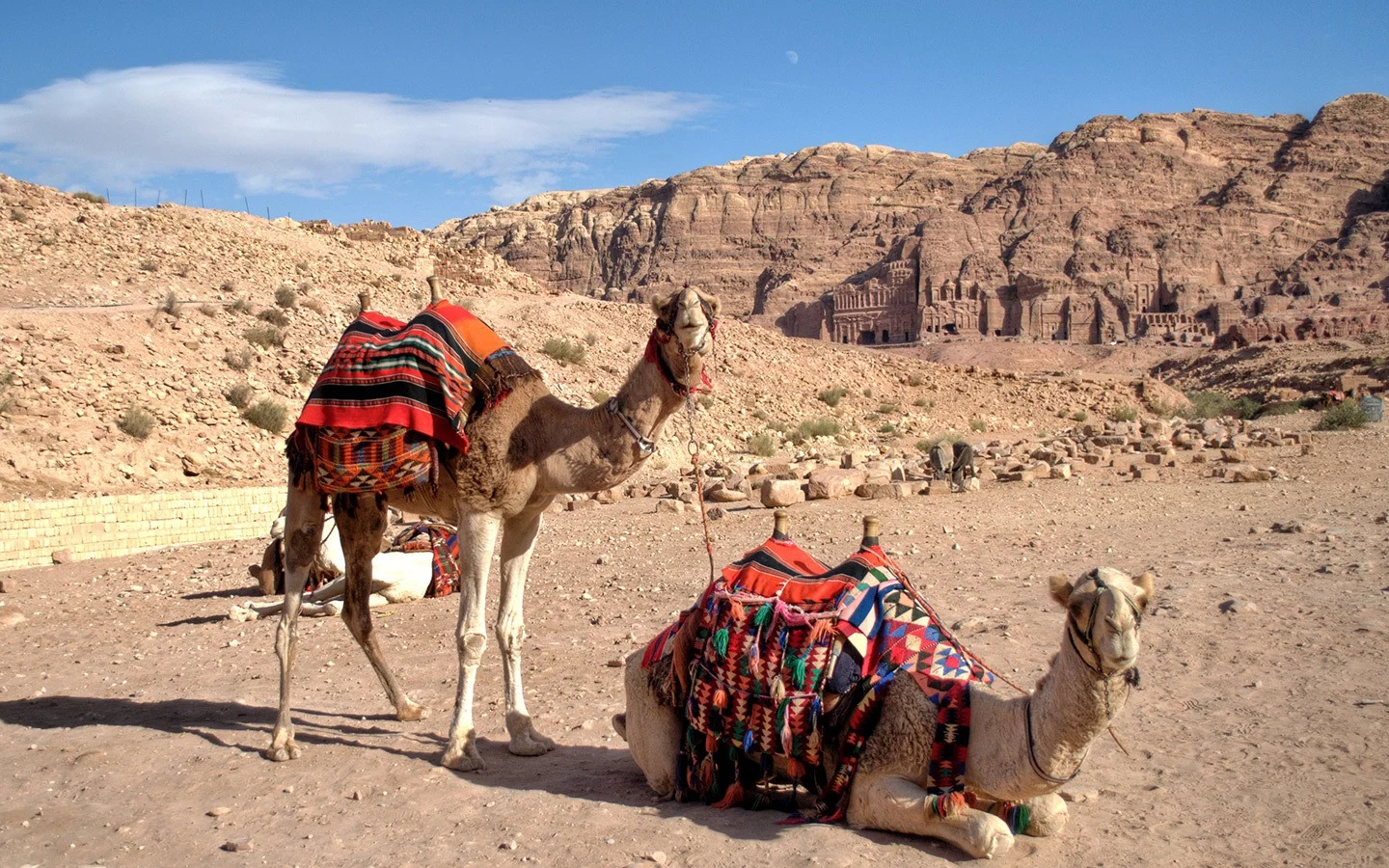
Map of Petra
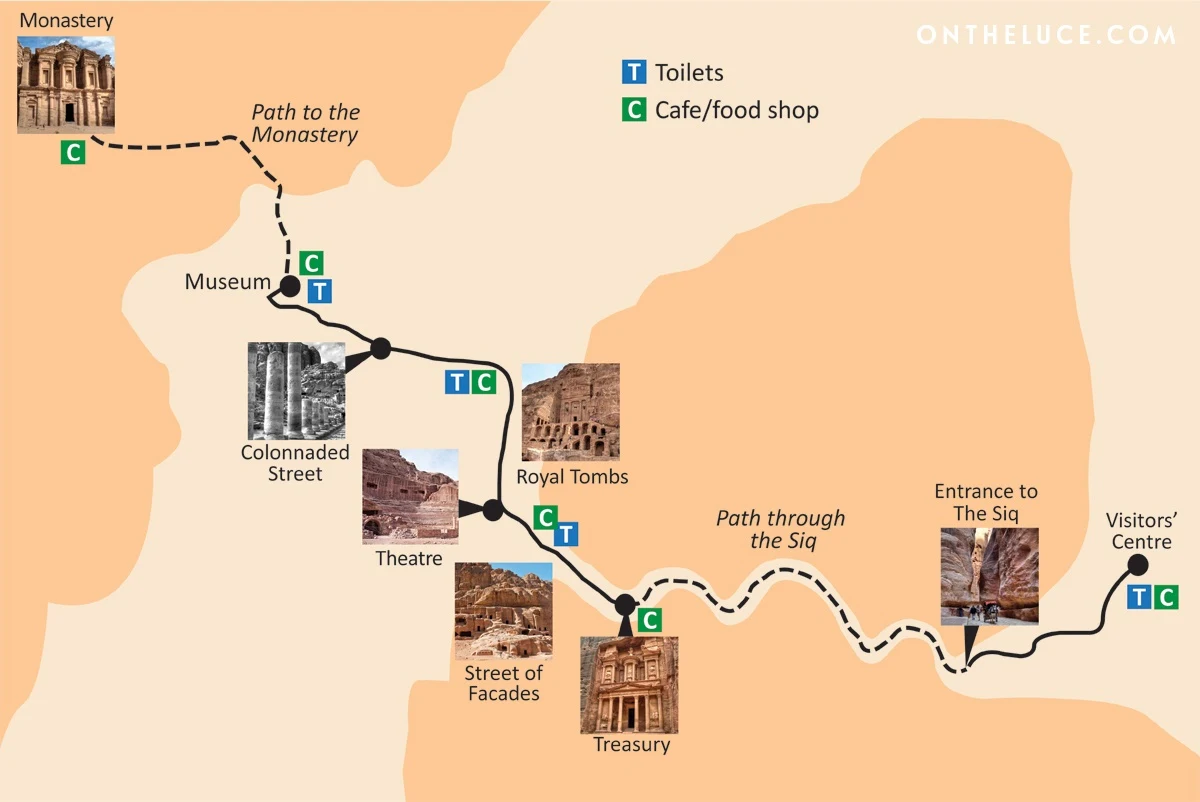
One-day Petra itinerary
If you only have one day in Petra, our advice would be to get there as early as possible. That way you can avoid the heat and also miss the worst of the crowds, as day trippers from Amman and Aqaba normally arrive at the site around mid-morning.
The Siq
After leaving the visitor centre, where you buy your entry ticket, it’s a 10-minute walk downhill to the start of the Siq. The name al-Siq means ‘the shaft’ and you can see where it gets its name, as shafts of light filter down onto the dark pathway below. At times the gorge is only three metres wide, with the rocks above towering to 180 metres high.
The Siq was formed as tectonic movement pulled the rocks apart, and over the years water has rubbed the surfaces smooth into sinuous curves of golden pink rock. The walk through the Siq to the Treasury is a mile/1.6km and takes around 30 minutes (there are also electric golf buggy-style carts you can get a lift in which cost JD25 – £29/$34).
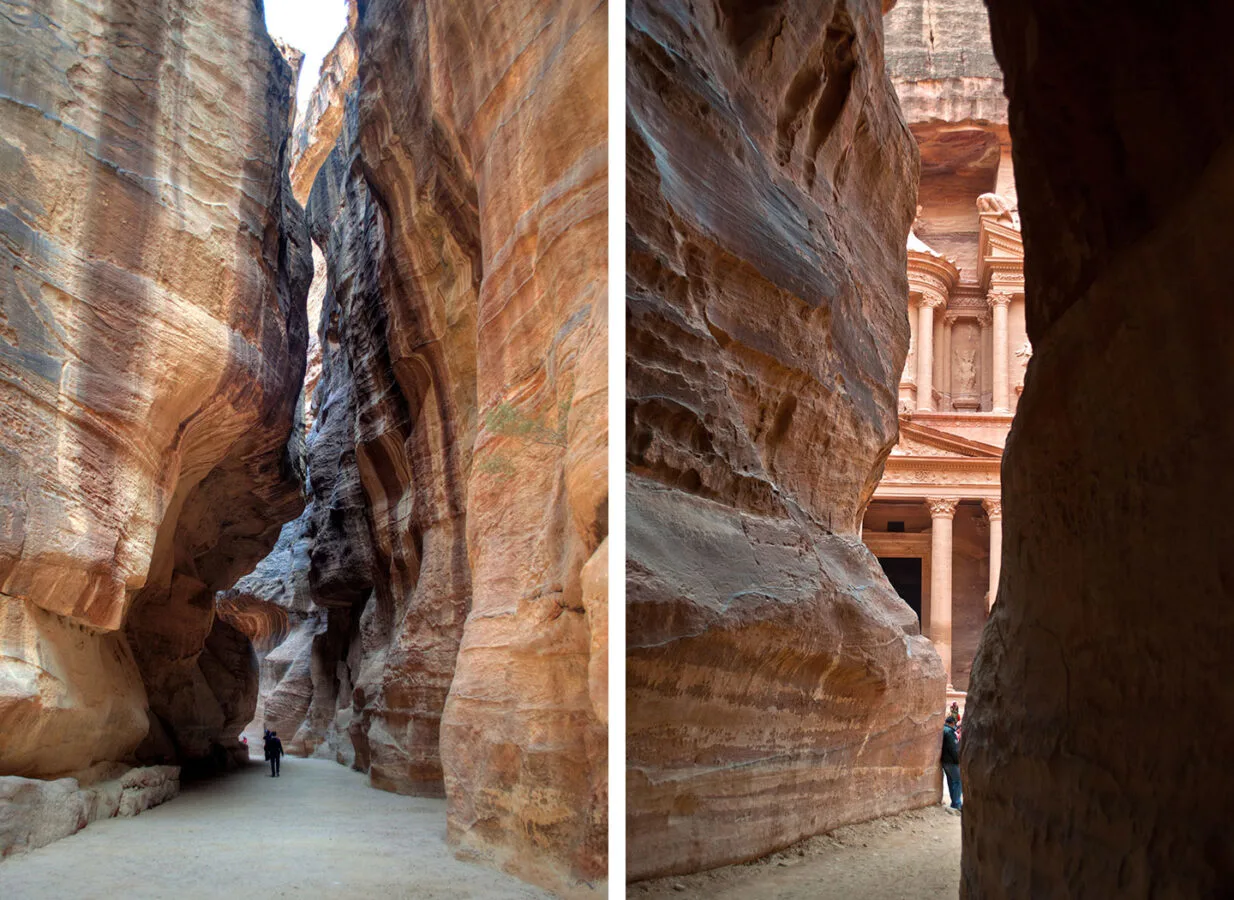
The Treasury
The Treasury – Al Khazneh in Arabic – is Petra’s most iconic sight. It’s carved into a sheer sandstone cliff almost 40 metres high. And despite the name, it was probably a royal tomb or temple rather than a treasury. The name comes from the Bedouin who thought there was treasure hidden inside a urn on the second floor, which is actually just solid stone.
The design of the Treasury mixes Classical and Arabian styles, and the details are still so well preserved and detailed that it’s hard to believe they are over 2000 years old. The sun hits the front of the Treasury in the mornings (around 9am–11am depending on the time of year) and in the afternoons it glows orange as the sunset is reflected onto the rock.
The area in front of the Treasury and carrying on into the Outer Siq is the busiest part of Petra, with stallholders selling jewellery, Bedouin offering camel and donkey rides, and musicians playing the rebab (a haunting one-stringed Arabian fiddle).
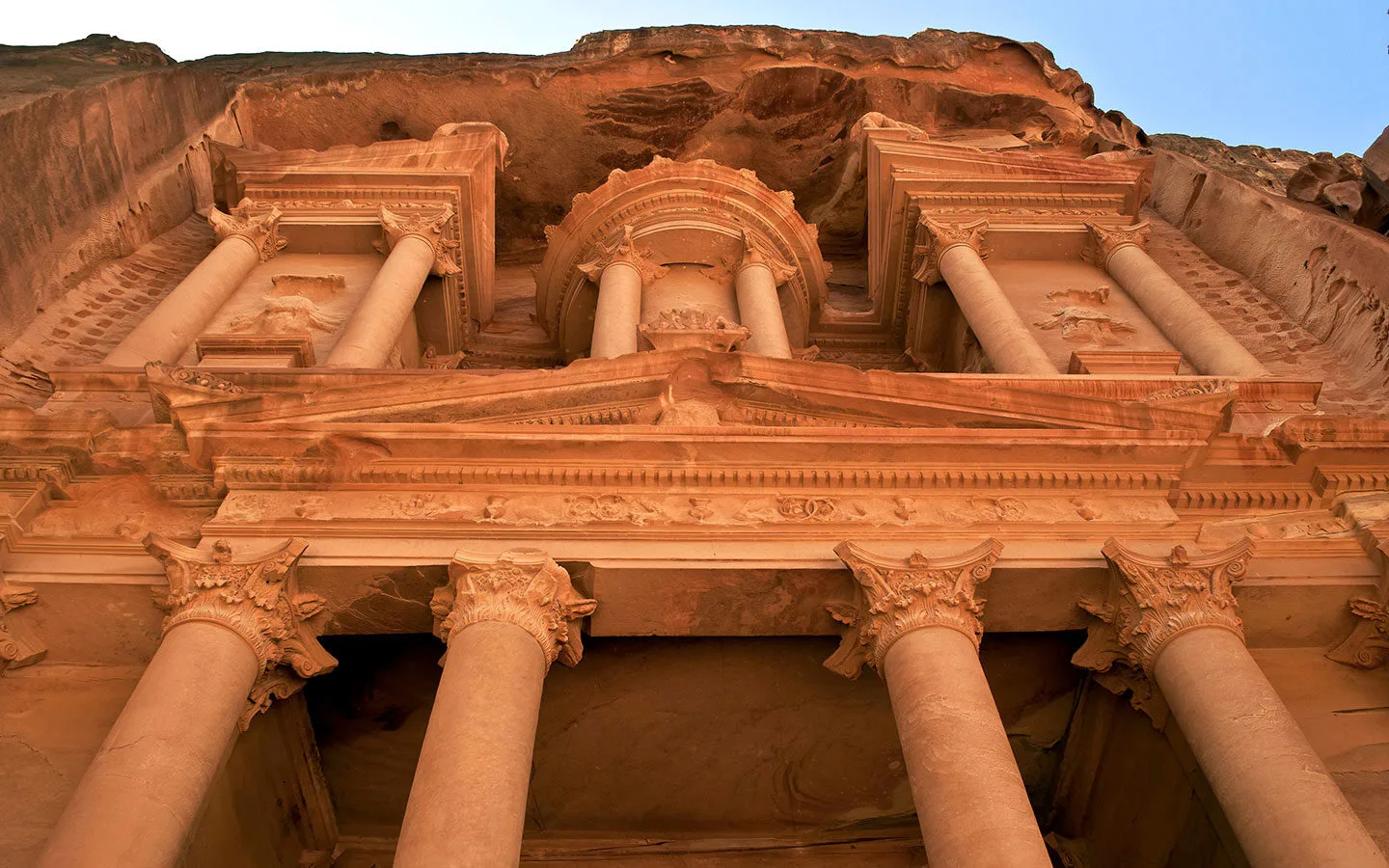
Street of Façades
Beyond the Treasury, the site opens up and you can see over 40 tombs carved into the hillside. This area is known as the Street of Façades, with tombs ranging from ornate structures built for rich merchants to small caves stacked on top of each other. You can take a look inside some of the tombs here fairly easily without having to climb.
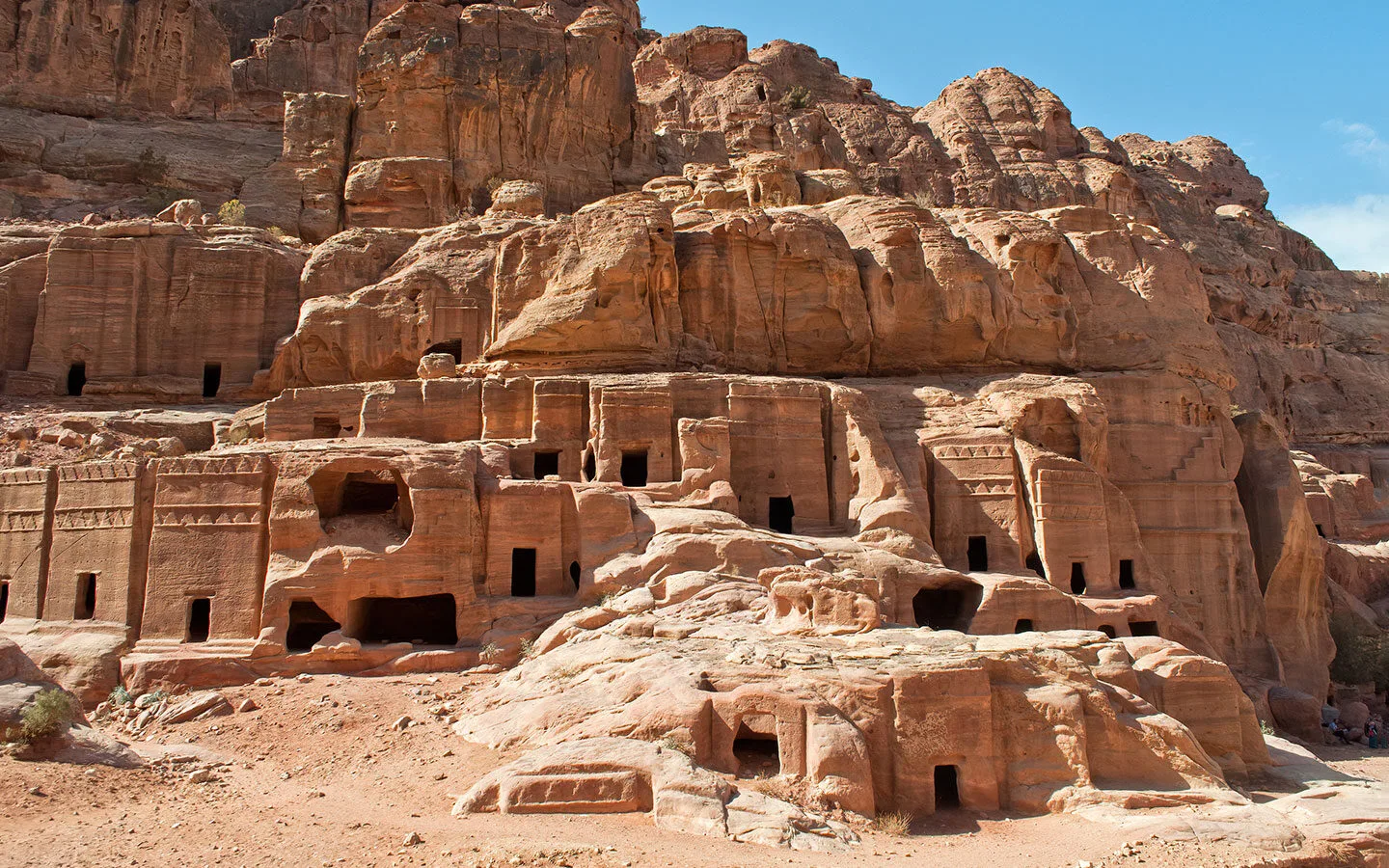
The Theatre
Next along the path is the Theatre. Although it looks Roman, it was built by the Nabateans over 2000 years ago. It was cut out from a huge slab of rock and seated over 3000 people when it was built. There was originally a carved orchestra area and a three-storey backdrop to the stage, but no-one knows what sort of performances were put on here.
When the Romans took over Petra, they added another tier to the top to more than double the capacity. But a lot of the building was destroyed by the 363 AD earthquake, after which it was partially dismantled and the stone was used to construct other buildings.
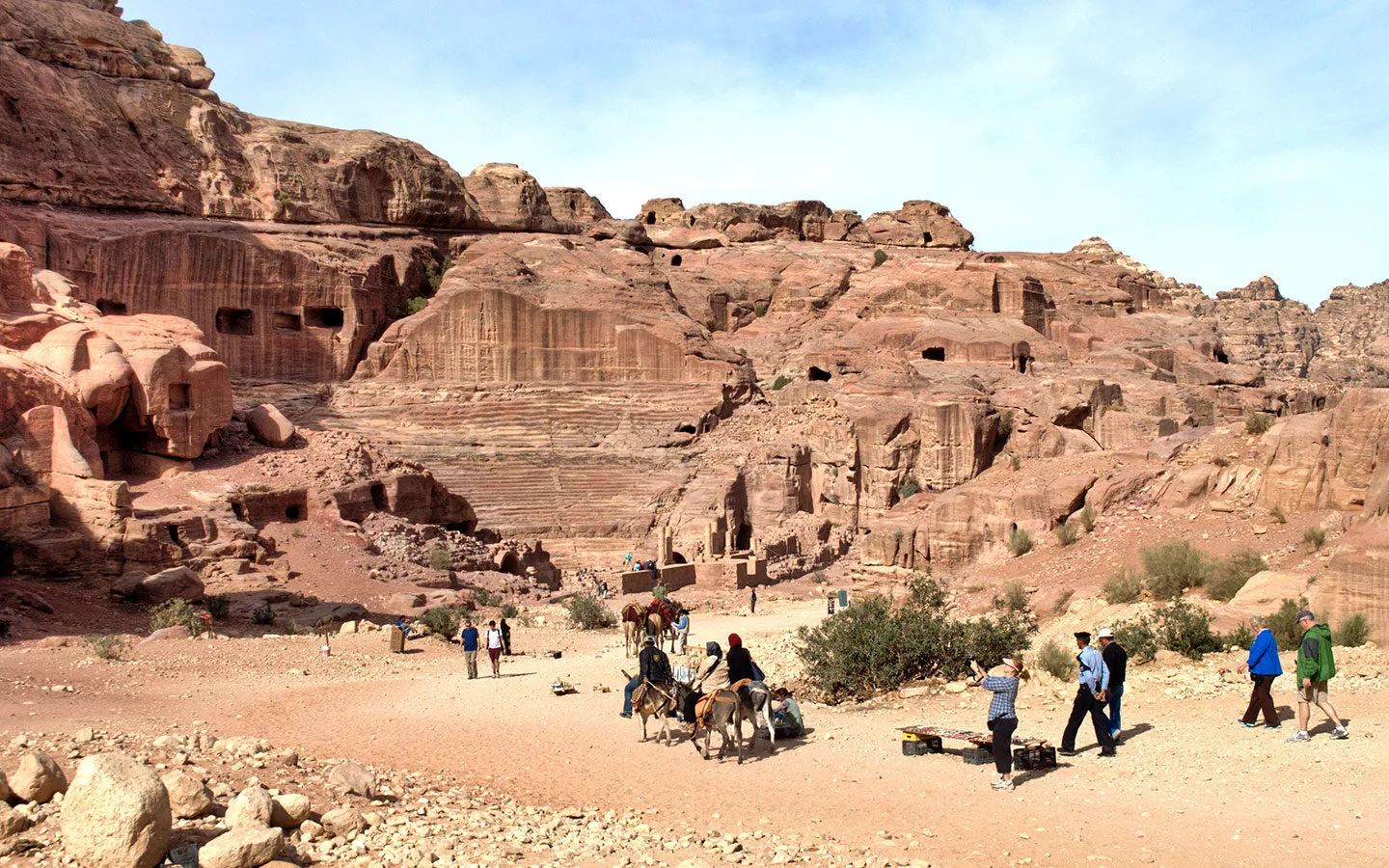
Royal Tombs
Downhill from the Theatre the path widens out, and is overlooked by the Royal Tombs. These are some of the biggest and most impressive tombs in Petra, which were built for Nabatean royalty and politicians. The Royal Tombs are made up of four different tombs – Urn Tomb, Silk Tomb, Corinthian Tomb and Palace Tomb.
The biggest is the Urn Tomb, and you can climb up steps in the rock to take a look inside. The tomb itself is just an empty cave after it was gutted to be turned into a church by the Byzantines. But up close that huge frontage towers impressively over you, and looking out from the terrace there are panoramic views across the rest of Petra’s old city.
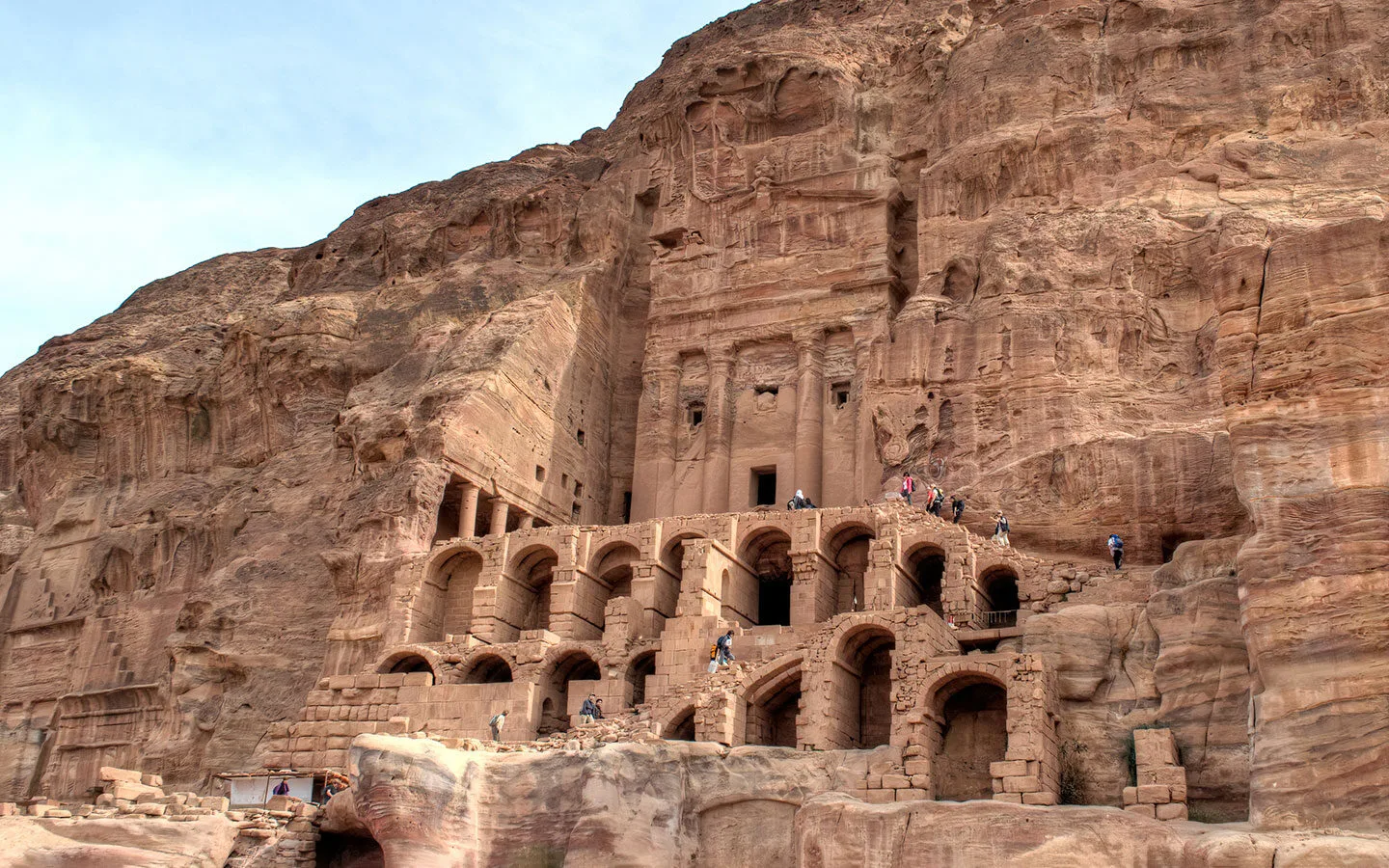
Optional: Treasury viewpoint walk
It takes around 30 minutes to an hour to walk from the Treasury to the Royal Tombs, depending on how many stops you make. At this point you can add on an optional walk up to a viewpoint which gives you a spectacular view of the Treasury from above.
The walk starts between the Palace Tomb and the tomb of Roman governor Sextius Florentinus and climbs up 900 steps to the top, so it’s fairly challenging. The route is 1.1 miles/1.8km each way. At the top there’s a Bedouin tent where you can buy drinks and snacks for a couple of dinar to access the best photo spot overlooking the Treasury.
Then retrace your steps back to the Royal Tombs. In total the walk should take around 90 minutes to two hours, including time to stop and admire the views.
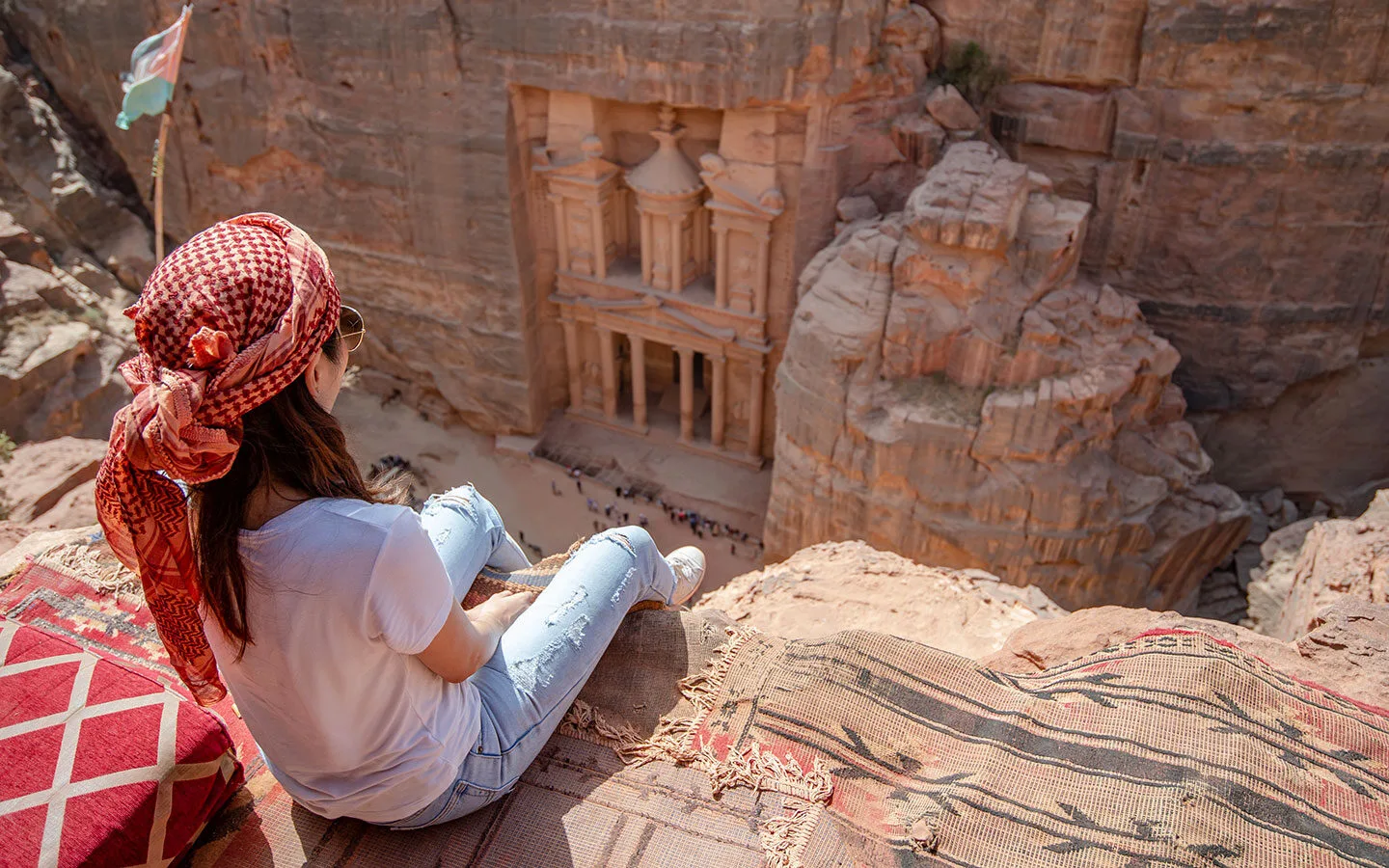
Colonnaded Street
From the Royal Tombs, a paved Roman road leads through the Colonnaded Street. This would have been the main shopping area in Petra, with a nymphaeum (fountain) at the start. But it has been badly damaged by floods and earthquakes so you have to imagine how grand it’d have looked with a full row of columns and statues lining the way.
At the end of the street you pass the Qasr Al Bint temple and head into the basin area, which is a good spot for lunch. The Basin Restaurant has indoor (air conditioned) and outdoor seating areas and serves a mix of Jordanian and international dishes in their buffet. Or you can get drinks and snacks from the Nabatean Tent Restaurant.
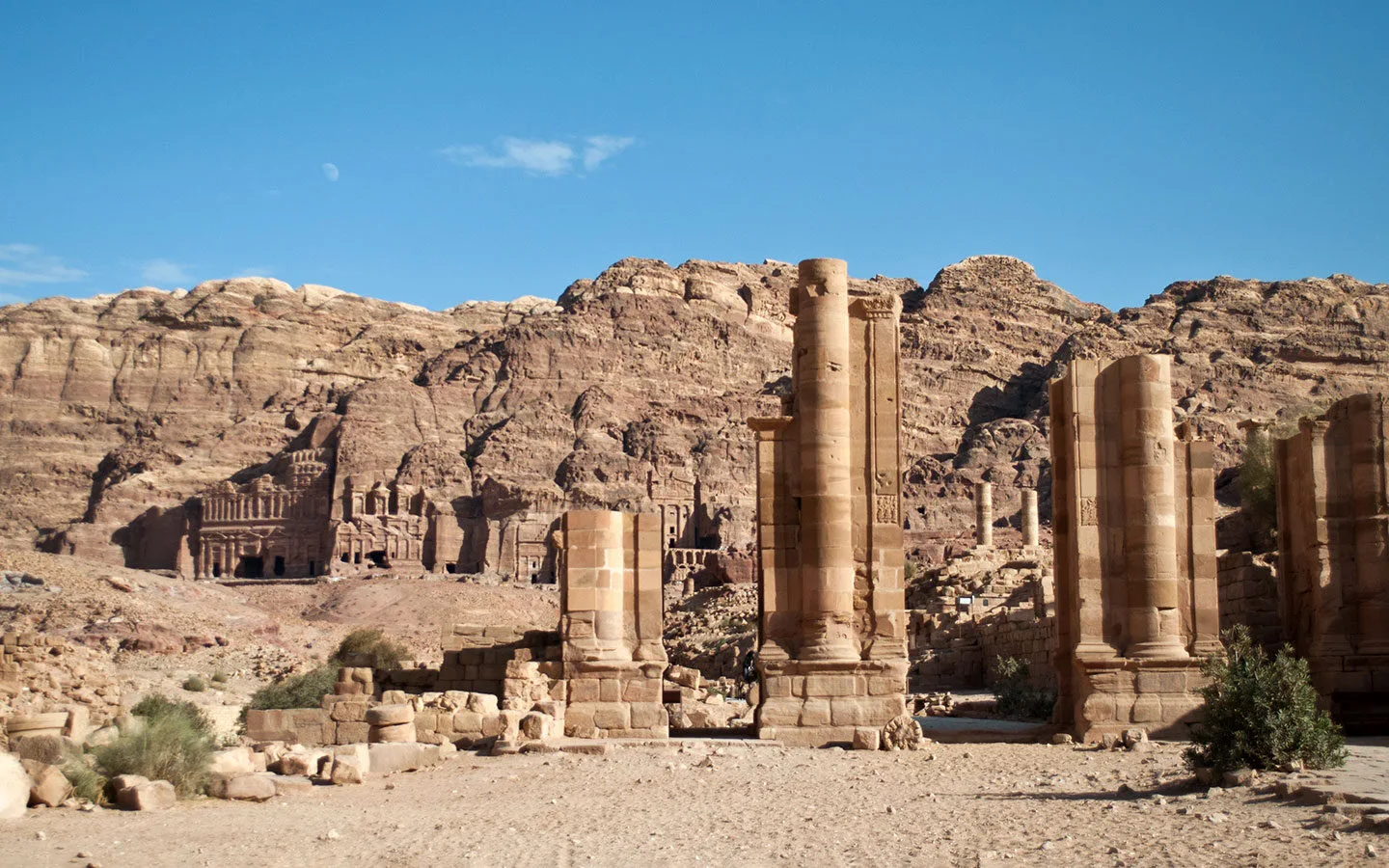
The Monastery
The hilltop Monastery is one of the highlights of a day in Petra, but if you are pushed for time or have limited mobility it can be cut out of the itinerary (you can also ride up to the top on a donkey but we don’t recommend it for animal welfare reasons).
The path to the Monastery starts near the Basin Restaurant with 800 steps carved into the rock. It takes around 45 minutes to the top, with stalls along the way selling jewellery and tea where you can stop off and rest. Or just find a convenient rock for a breather and soak up the views across the valley and the rocky landscapes of Wadi Arab.
The Monastery – or al-Deir – is Petra’s largest temple with a similar design to the Treasury, but on a bigger scale. It’s over 50m high and 45m wide, carved from a sheer rock face. It’s not quite as ornate as the Treasury but its size makes it an impressive feat of engineering, even without taking into account the journey the Nabateans had to make to get there.
There’s a café looking out over the Monastery where you can have a cold drink before making your way back down the same route you came on.
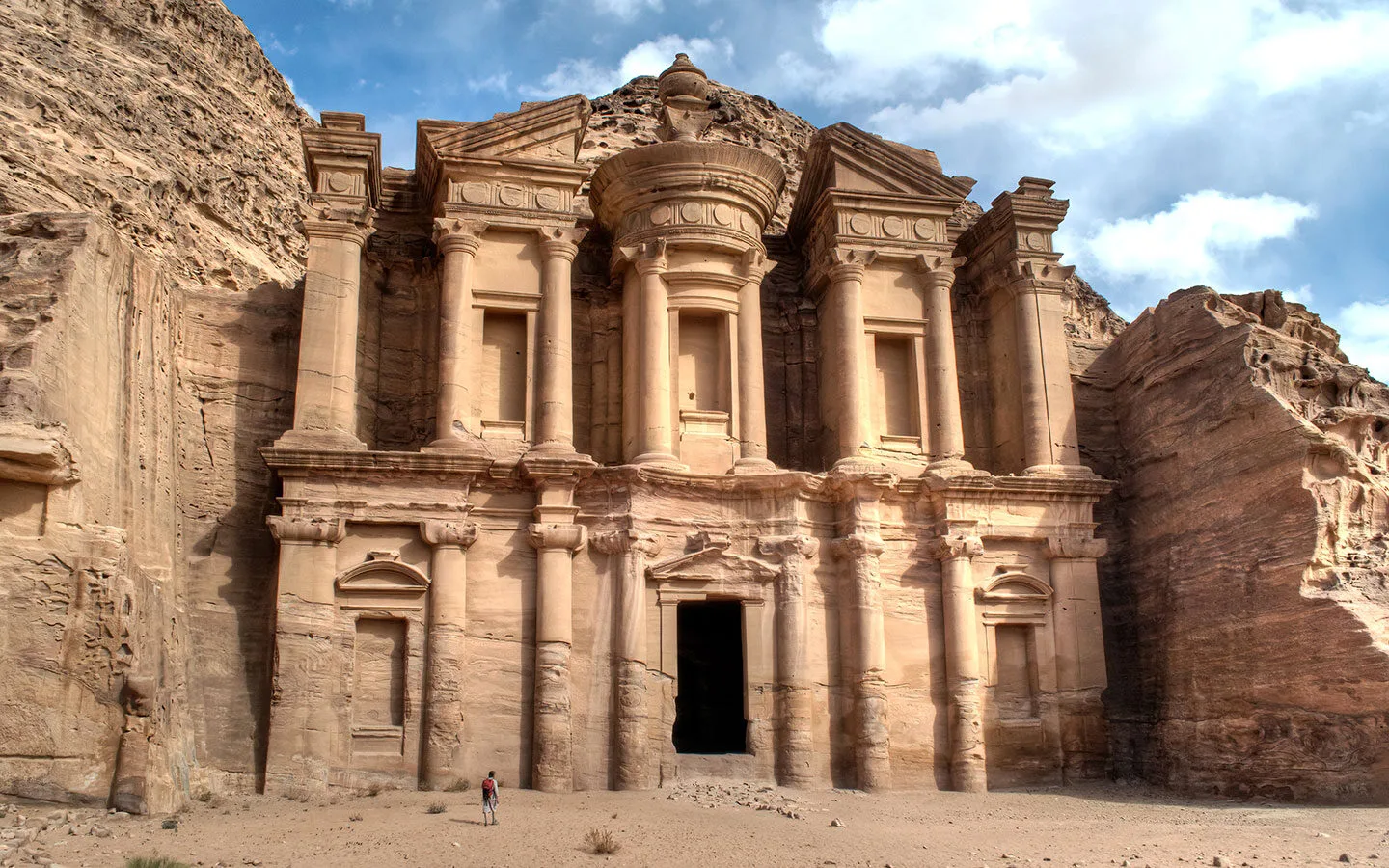
The return journey
The basin is the furthest point of Petra, and it’s around a 2.5-mile/4km walk back to the entrance. It takes longer than you’d think from the distance though as it starts with a gradual uphill climb on sandy soil and you’ll have already been walking most of the day, but there are plenty of places to stop off and rest or explore anything you missed.
The site closes around sunset, and if you’re near that time you should pass the Treasury on the way back just as it glows in the early evening light. Then once you’ve exited the site, call into the Cave Bar for a drink. Part of the Petra Guest House, the bar is inside a 2000-year-old Nabataean tomb and has comfy armchairs where you can relax and recover.
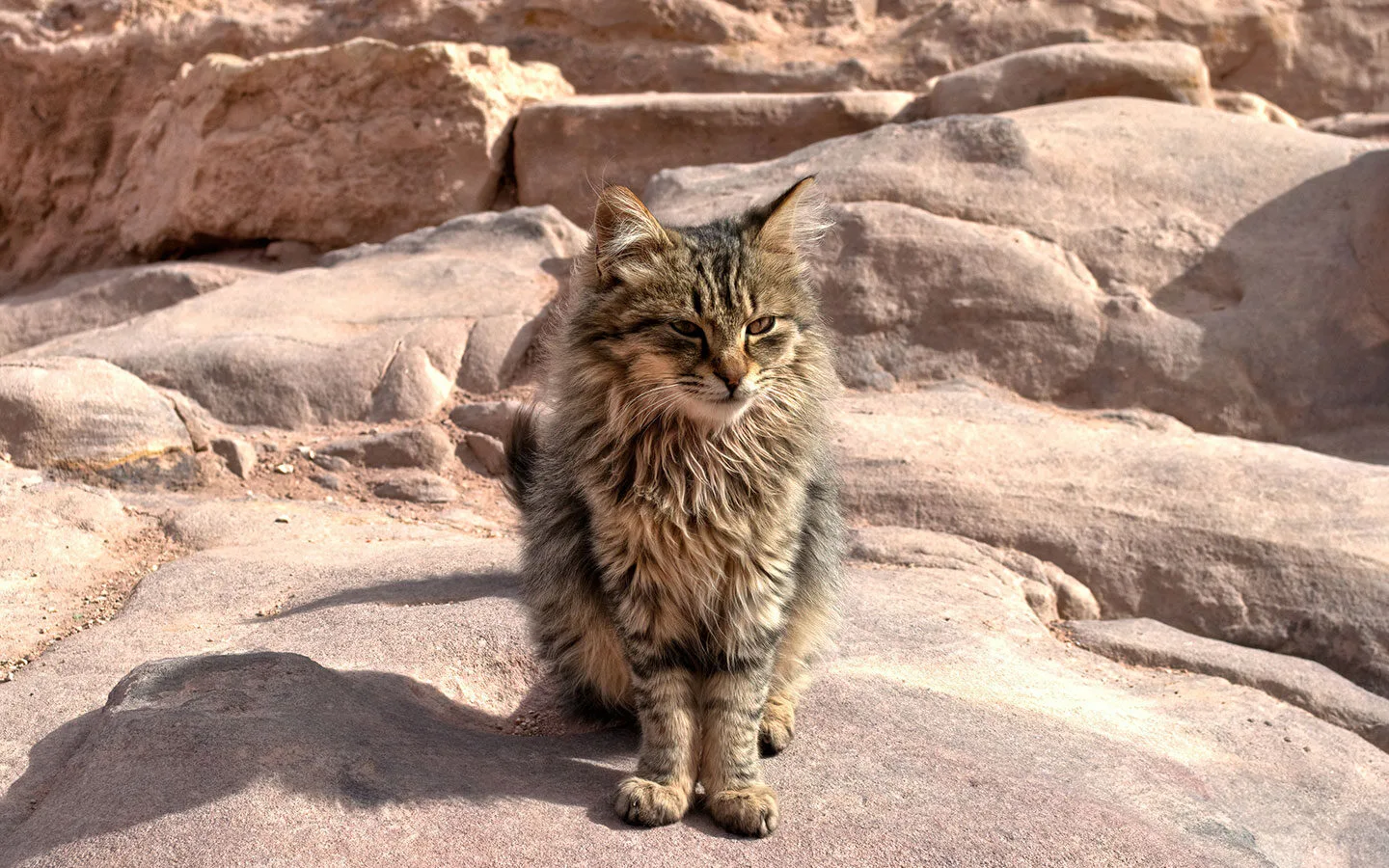
Optional: Petra by Night
If you’re visiting Petra on a Monday, Wednesday or Thursday, finish your one day in Petra by seeing the site after dark. Petra by Night starts at 8.30pm and lasts two hours. You do need to buy an additional ticket though as it’s not covered in the standard entry fee. These can only be bought on the day and are available from the visitor centre.
The route along the Siq is lit by 1800 candles, with the Treasury illuminated in glowing light. At the end there are mats laid out front of the Treasury where you can sit and listen to a culture show with Bedouin music. It’s magical to see but is a really popular event – our tip is to hang back until the main crowds have left to see it at its most peaceful.
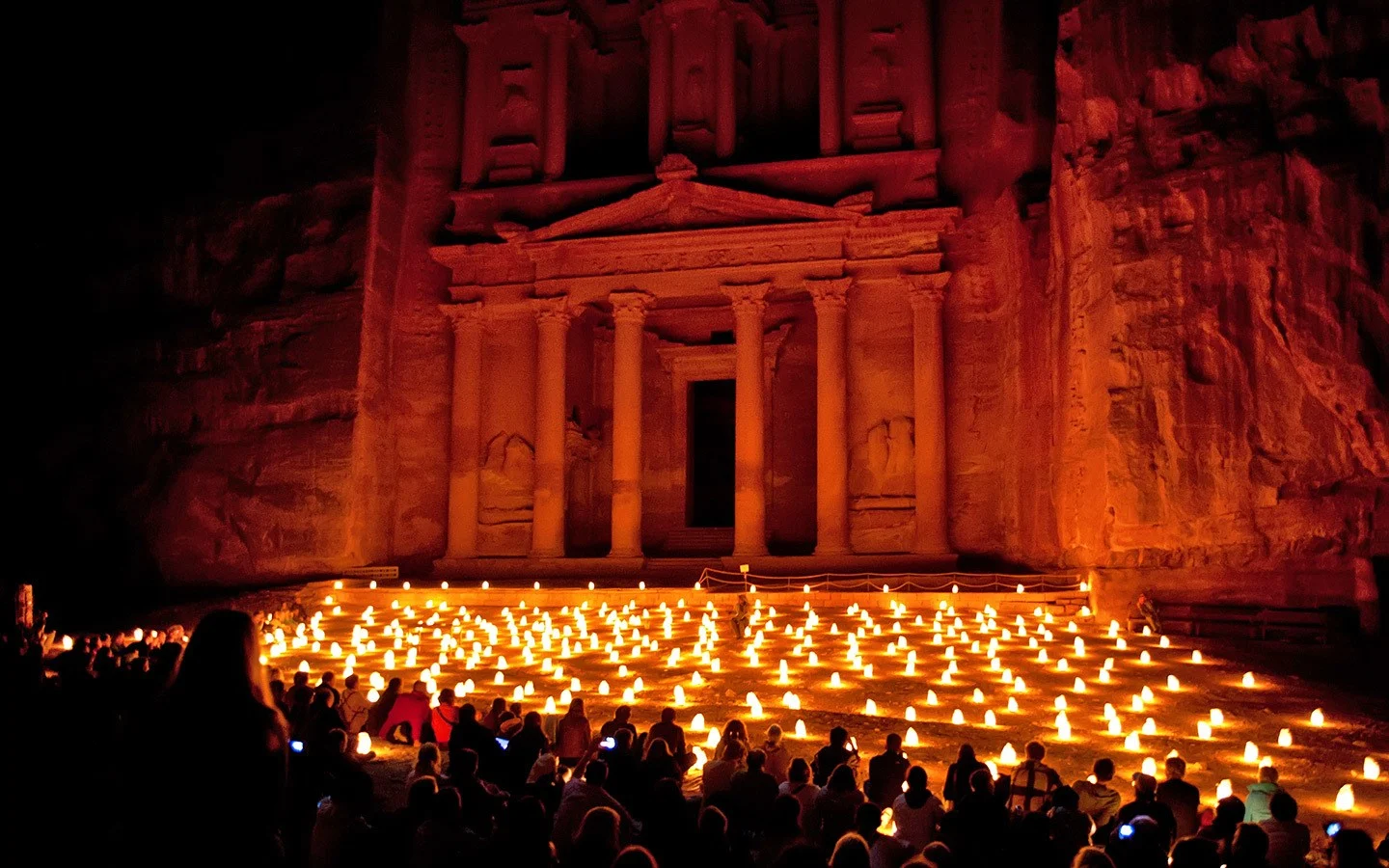
Save for later
